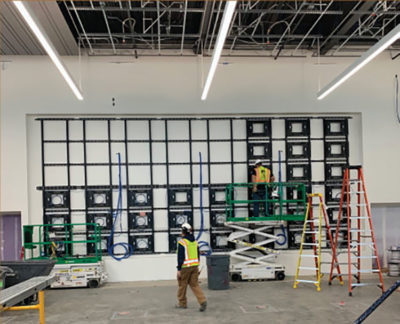RON CLARKSON, national transit and special systems operations manager at San Jose, Calif.-based Rosendin, discussed his company’s foray into some of the new technologies and processes that are defining the future of electrical contracting:
Please describe the type of work electrical contractors typically performed 20–30 years ago.
For over 30 years, I’ve been in the technology and special systems business, and in that time, the advancements in technology and migration have happened at an incredibly rapid pace. When I started in the IBEW field, I was installing twin-ax, IBM type-2 token ring, category 3, and 25-pair balun-type cable installs for dummy terminals and IBM AS/400 networks. In 1991, the introduction of Category 5 ethernet changed the way we did business. Fast-forward to today and we’re heavy on fiber optics, mostly single-mode and many flavors of category 6A and 7S.
Can you discuss the more “nontraditional” approach you and your fellow electrical contractors take when working within today’s commercial buildings?
The biggest change has really been in systems overall and the many associated components for all of the systems that we design, install, integrate, test and commission. With 30+ systems on most of our projects in transportation, the level of in-house intelligence is a large component of being successful and is always a challenge. The evolution of system technologies, both firmware and software, keeps us in the classroom and constantly striving to further educate ourselves on the latest methods. The playbook for these installations, and specifically the quality assurance/quality control (QA/QC) plan for the installations, testing and commissioning plans, is how we win on the job. The prefunctional testing of widgets and IP address setup, kitting and prefabrication are a huge difference in the way we do things today versus 30 years ago.
How has the market changed over time?
The level of design support, QA/QC, field training, testing and commissioning has increased substantially and will continue to grow; at the same time, the value of the projects and the risk involved have increased significantly. We’ve personally witnessed the growth in the value of larger integration projects, as 30 years ago a “big” job was $3 million, while today that value is $10 million to $300 million.
Has the evolution to more nontraditional work been a challenge or an opportunity?
I haven’t had this much fun since starting the business and learning technology. Every year the bar is moved higher and the ability to innovate and think out of the old-school box have never been so important. It’s a great opportunity for contractors.
Finally, what advice would you give other electrical contractors about venturing into the “smart” arena and opening up to more nontraditional work?
If you’re not a systems integrator in the IBEW and you’d like to become one, we can help road map the discussion and mentor your company to grow into it. We need the IBEW strong and doing all of this work, and it starts with vision, passion and intelligence!
—Susan Bloom
https://www.ecmagdigital.com/ecmag/august_2021/MobilePagedArticle.action?articleId=1715942&app=false#articleId1715942


